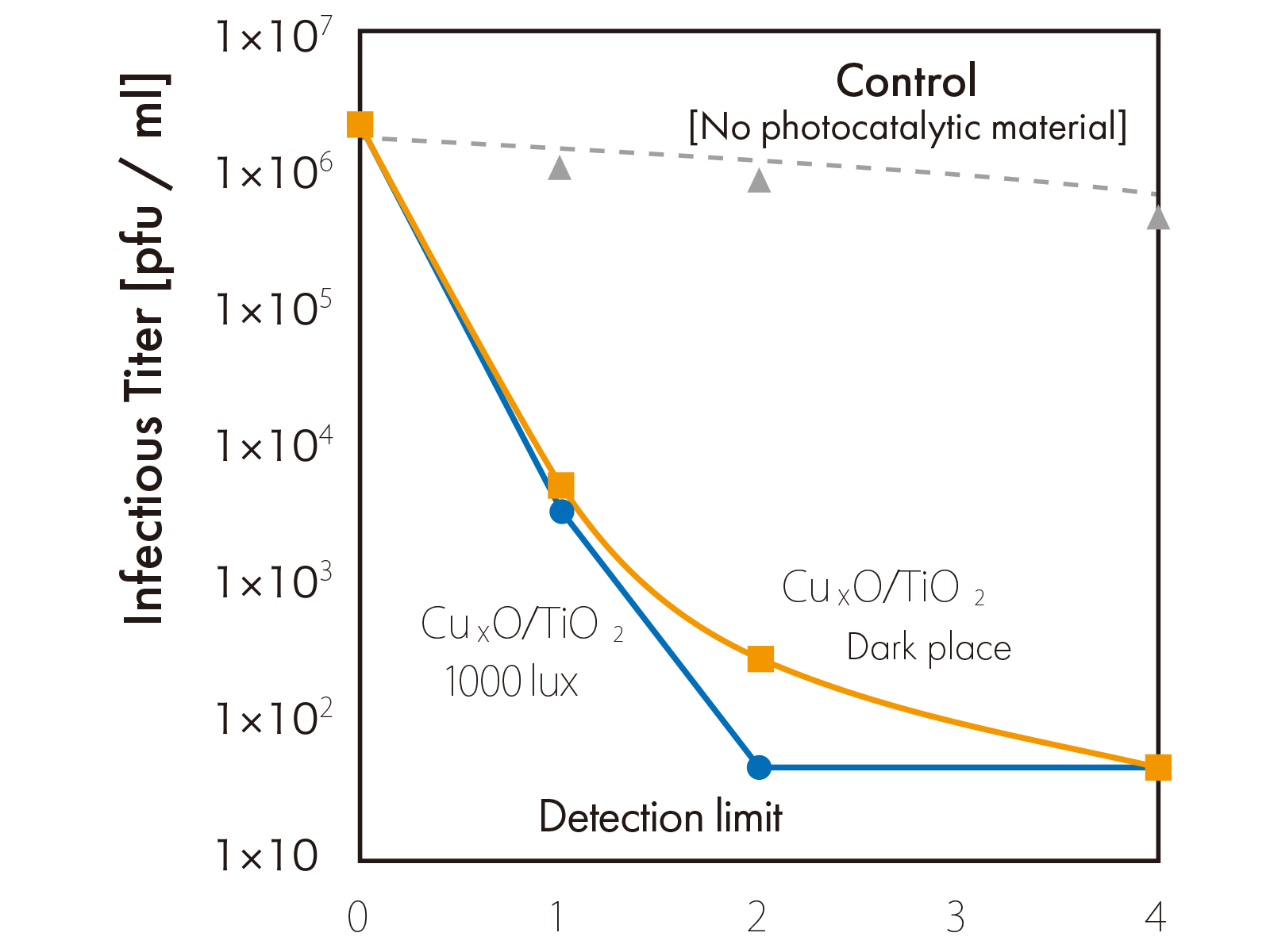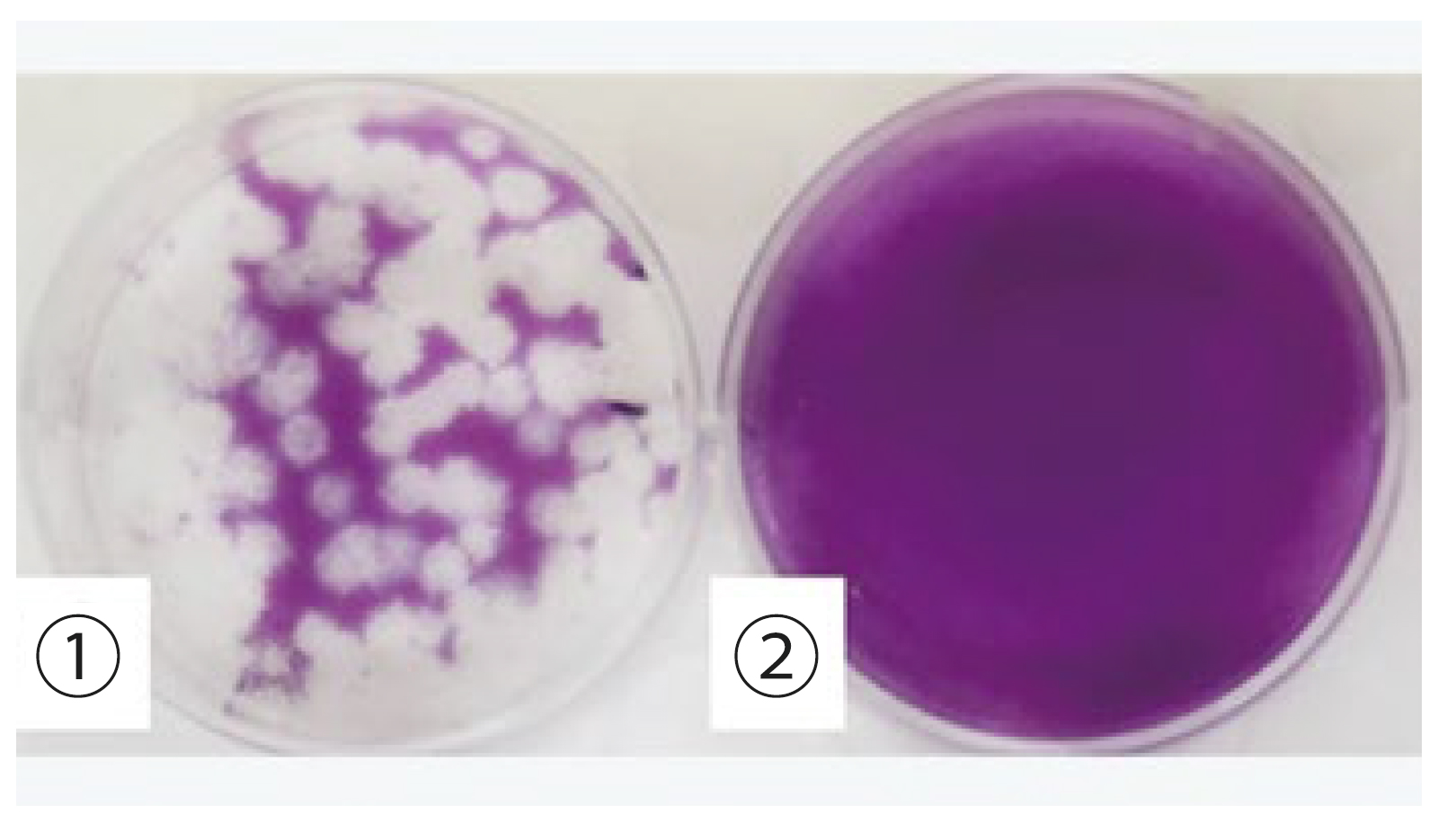On September 25, the research group of Tokyo Institute of Technology, Nara Medical University, and Kanagawa Institute of Industrial Science and Technology (KISTEC) announced the world's first new coronavirus (COVID-19) using visible light responsive photocatalytic material (CuxO/TiO2) verified inactivation. By experimentally clarifying the inactivation conditions, the antiviral effect of the photocatalyst was academically indicated.
(a)Changes in viral load

(b)An example of virus infection evaluation

Photo ①: Control. The new coronavirus infects the cells and the destroyed part looks white (The virus is not inactivated).
Photo ②: ②Visible light responsive photocatalytic material. It does not see cell destruction by the new coronavirus (the virus is inactivated).
Antiviral Effect of Visible Light-Sensitive CuxO/TiO2 Photocatalyst by the research group of Japan
